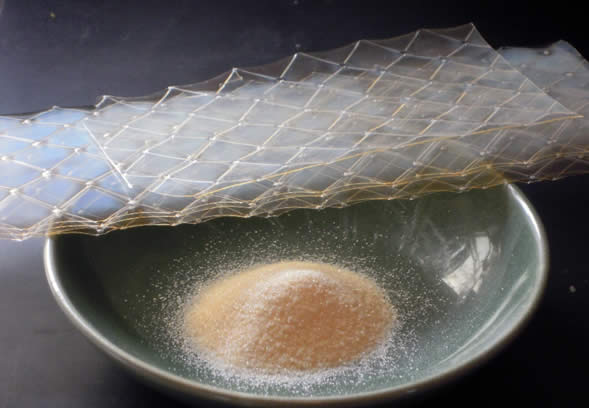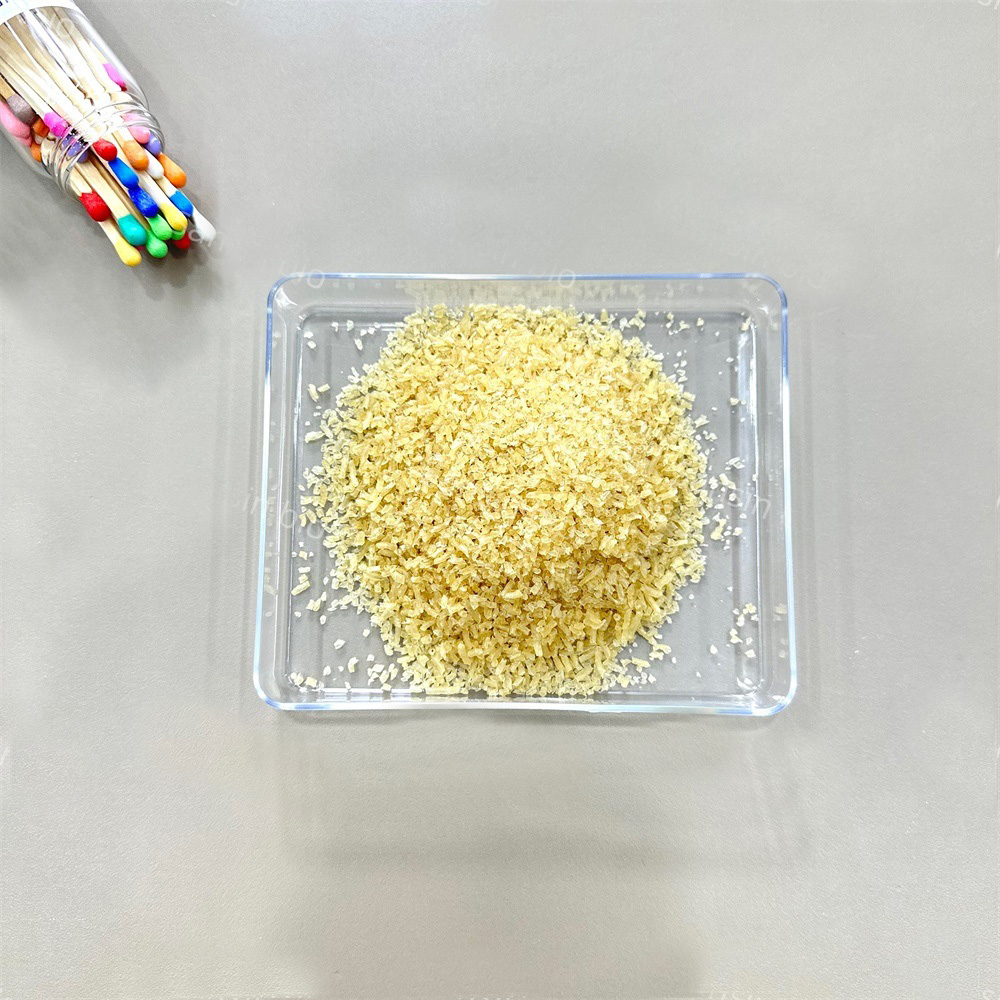Key Characteristics Of Gelatine
Gelatine is a natural colloidal protein having gelling properties and stabilizing effect. These depend on its type, concentration pH, as well the conditions of temperature.


Bloom (Gel Strength)
Gel strength also known as bloom value is the main characteristic used to describe gelatine, it is linked to the mechanical elasticity of the gelatine gel. The bloom indicates the force required in grams to depress a prescribed area of the surface of a 6.67% gelatine gel at 10°C. Gelatine bloom ranges from 100 to 300 grams and it is divided into different categories depending upon its bloom strength:
- High bloom (gel strength above 200 grams).
- Medium bloom (gel strength between 150 and 200 grams).
- Low bloom (gel strength less than 150 grams).
Particle Size
Gelatine particle sizes vary according to customers demand from 8 mesh (2.36 mm) to 60 mesh (0.25 mm).
Viscosity
Viscosity is an important factor regarding the behavior of a gelatine solution. Once dissolved in water above its setting temperature, gelatine will yield solutions typically ranging from 15 to 75 mPa.s.
Solubility
Typically, gelatine needs to swell before it solubilizes in hot water, but it can also be dispersed directly in hot water under stirring. Gelatine solution of 40% to 45% concentrations are attainable.
Shelf Life
Dry gelatine keeps its properties for at least five years when stored away from heat and moisture in its original unopened packaging.
Functionality Of Gelatine.
This versatile ingredient has been around for generations and
despite being best known as a key component in everyone’s favorite gummies, gelatine has many surprising and diverse uses. Its Gelling, Foaming, Emulsifying and Binding functionalities are complemented by numerous characteristics that make it irreplaceable in many applications.

